2020 Ford Explorer Again Appears in Cop Clothing
After rocking the same design with only minor alterations since 2011, Ford will soon debut an all-new Explorer. Arriving this year as a 2020 model, the model adopts the modular CD6 platform shared with Lincoln’s Aviator, making the new version of the venerable SUV rear-drive biased once again. New powerplants are also on the way.
Before we lay eyes on the new ute, however, Ford wants to show us, once again, the Explorer’s law enforcement brother: the Police Interceptor Utility, which the company first revealed under the cloak of darkness last June. We now have light. A wildly common sight on North American roads, the new version of the copped-up Explorer is all about nabbing bad guys … and saving departments money. The vehicle you see here arrives with a standard hybrid drivetrain.
Infiniti QX Inspiration: The First Time Ever I Saw Your Face
“I thought the sun rose in your eyes, and the moon and the stars were the gifts you gave … to the dark … and the endless skies, my love,” sang Roberta Flack in the heady and decadent early ’70s. Suffice it to say this writer didn’t feel the earth move in his hand upon gazing at the Infiniti QX Inspiration, not did his heart tremble like a captive bird.
The QX Inspiration, like the Q Inspiration concept of 2018, heralds Infiniti’s electric — or at least electrified — future, and it’s a future without a face.
Confirmed: Chevrolet's Bolt Loses Its Full Tax Credit In April, but Not the Doomed Volt
Good news for would-be Volt owners? Not really. Chevrolet’s soon-to-be-discontinued plug-in hybrid won’t live long enough to suffer the indignity of a halved federal EV tax credit. It’s dead in March, though remaining examples of the car everyone should want will no doubt linger on lots through the spring.
On Wednesday, General Motors announced, as expected, that it became the second automaker to pass the federal government’s 200,000-vehicle threshold, kicking off a three-month countdown to a chopped incentive.
Volkswagen's Solution to EV Charging Woes: A Charging Station That Requires Recharging
Concerned that customers won’t buy vehicles from its upcoming electric product tsunami for fear of missing their turn at the plug, Volkswagen is offering a fairly novel solution: mobile charging stations that also require recharging, presumably from a much larger charging station. A power station, for example.
The takeaway from Volkswagen’s lesson in energy packaging is “Buy an electric Volkswagen. You’ll be fine.”
Late Delivery? Tesla Says It'll Cover Your Tax Credit Shortfall
Having rung the bell on 200,000 electric vehicle deliveries in the U.S., Tesla will enter 2019 without the ability to offer a full $7,500 federal tax credit to would-be buyers. While not nearly as attractive an incentive as the same amount applied to a lower-priced EV, it’s still free public dollars. And it’s better than $3,750.
Twice this past fall, Tesla CEO Elon Musk warned customers they’d need to order by a certain date in order to ensure a delivery date prior to January 1st. After receiving a holiday earful from dutiful customers now facing late deliveries, Musk put on the Santa suit.
Chevrolet Volt's Discontinuation Leaves Battery Plant Employees Out of a Job
The vehicle they provide batteries for has less than three months to live, and this week brought news to 50 workers at General Motors’ Brownstown Battery plant that their positions are even more short-lived. In a filing with the state of Michigan, GM said it will cut 37 hourly and 13 salaried workers at the Detroit-area facility, adding an extra dollop of job losses to the mass culling announced late last month.
If the idea of owning a plug-in hybrid with real electric range tickles your fancy, your time’s running out fast.
A Cheaper Audi EV's on the Way: Report
Customers won’t get a chance to buy an Audi E-tron SUV until next year, but, if money’s tight, they might want to hold off for a while. The German brand’s first electric utility vehicle (seen above) arrives in the second quarter of 2019, carrying a base price of $74,800 — at least once the launch editions clear out. More E-trons will follow, including a Sportback version of the SUV and a top-flight GT sports sedan.
Green, but still requiring plenty of green to plunk one in your driveway. Audi apparently has a solution for budget-minded premium EV shoppers, and it plans to make it happen with help from Volkswagen.
Toyota Expects a Quarter of Prius Customers to Choose AWD-e, but 25 Percent of Prius Is Not What It Used to Be
As America’s new vehicle market shifts to vehicles with four driven wheels, greater ride height, and dog-friendly tailgates, it seems more than sensible for the Toyota Prius to take part in some community outreach.
The Prius, America’s 10th-best-selling car just a decade ago, can keep doing the same thing over and over again while expecting different results. Or, the Prius can make a significant change – via available “independent electric, magnet-less rear motor” – to offer all-wheel drive, one of the feature sets that’s drawing car buyers away from cars.
And that’s exactly what Toyota has done for the otherwise refreshed 2019 Prius ( reviewed last week by our own Matt Posky). In a manner of speaking, Toyota expects big things from the Prius AWD-e: 25 percent of Prius customers, to be precise.
But one-fourth of all Prius volume is not what it used to be. In fact, it’s a far cry from what it used to be. A mere fraction of what it used to be. One-quarter of all Prius volume will make the Prius AWD-e barely more common than the Alfa Romeo Stelvio.
Waiting for That Diesel Santa Fe? Hyundai Says Forget About It
If you’re enamored by the thought of a high-torque, compression ignition Hyundai crossover, dream on. After promising a diesel version of its new-for-2019 Santa Fe, which began arriving at dealers this past summer, Hyundai has announced a diesel is off the table.
The automaker admitted as much to Green Car Reports following a plant tour in Seoul. Apparently, Hyundai feels Americans just aren’t interested. With the diesel’s stillbirth comes another change for the revamped crossover: the removal of its third-row option.
Ohio Senators Want to Know GM's EV Plans, Demand American Production
Two senators in Ohio, home to the unfortunate Lordstown Assembly plant, want answers from General Motors. Following the automaker’s announcement that it will withdraw the plant’s sole product — the Chevrolet Cruze — in March of 2019, leaving the factory’s remaining 1,500 workers out of a job, politicians on both sides of the border want to know what GM’s plans for electric and autonomous mobility mean for their constituents.
If GM’s truly planning on springing a wave of electric vehicles on American buyers, Congress wants assurances that American workers will build them.
An AWD Hybrid Corolla Could Happen, but What Becomes of Toyota's C-HR?
Jack Hollis, Toyota North America’s general manager, was quite forthcoming during a roundtable discussion at the L.A. Auto Show. After unveiling the brand’s upcoming all-wheel drive Toyota Prius and hybrid Corolla sedan, he speculated on what else might be coming down the product pipe.
We already know that Toyota wants to TRD-ify as many models as possible (the Camry and Avalon aren’t an end point, apparently), but AWD and hybrid power serve the purposes of practicality, not style. There’s more reason to desire a vehicle that sips gas or blasts through snowbanks with aplomb.
That’s why an AWD, hybrid Corolla isn’t off the table. Upon hearing this, this writer’s mind drifted to the new-for-2019 Corolla Hatch and a small crossover that, strangely, isn’t offered with AWD. What would a would-be C-HR buyer be giving up if Toyota went ahead and electrified the rear axle of the Corolla Hatch?
As Expected, Volkswagen's EV Platform to Breed a Big 'un
As we’ve seen with nearly all mainstream automakers, going without a three-row crossover is akin to cutting one’s throat. Large broods demand seating for seven or eight, environmental considerations be damned.
Volkswagen wants to keep the family together.
Hyundai's EV Range Reign to Prove Short-lived in Europe
Hyundai’s front-drive Kona Electric began appearing on Norwegian streets back in August, slowly proliferating to other European countries ever since. Backing up the model was its enviable status as the longest-range EV on the market.
Using the new Worldwide Harmonised Light Vehicle Test Procedure (WLTP), testers rated the Kona EV’s range at 292 miles, more than enough to travel between tightly spaced European cities. Now, the vehicle faces a double blow of bad news. First, the testers got the test wrong, and second, a new Tesla his poised to arrive on the east side of the Atlantic.
The Government's Coming for Your Classic Car, but They Can't Take It All: Aston Martin CEO
Aston Martin CEO Andy Palmer isn’t very trusting of his government’s plan to ban all internal combustion vehicles by 2040. The 55-year-old Brit had a few things to say about the UK’s intentions last year, none of them very kind to policy makers.
Since then, it seems he’s grown even more concerned about the legions of old Astons prowling the carriageways of his fair country. With this in mind, the automaker developed a way to “future-proof” emissions-spewing classics and keep them from becoming illicit Red Barchettas sought out by agents of a puritan superstate. You’ll have to hand over your inline-six or V8 first, but don’t worry — you can put it back.
The End of the Line for Internal Combustion Volkswagens?
Certain green-tinged websites would sure want you to believe it. At the Handelsblatt automotive summit in Volkswagen’s home base of Wolfsburg, Germany this week, VW strategy chief Michael Jost etched a tombstone for the internal combustion engine.
But is the coming decade really the last one to feature VWs with exhaust pipes?
Why Two Compact Hybrids? Demographics Play a Role, Toyota Claims
For two decades, the name “Prius” was all a committed Toyota buyer needed to know when searching for a compact hybrid vehicle. Soon, there’ll be two options, not counting the plug-in Prius Prime.
The automaker’s decision to offer a hybrid version of the still strong-selling Corolla was not made to usher its famed hybrid model into the shadows; rather, there’s two key reasons for it. Sure, the Corolla nameplate carries an enviable reputation and boatloads of name recognition, but Toyota’s also willing to admit that the Prius’ attributes just weren’t resonating with a certain segment of the American public.
So Long, Synergy? Toyota Wants to Break From Its Hybrid Naming Tradition
Despite long, grinding years of adulthood, the word “synergy” still reminds this author of the character on the excruciatingly 1980s cartoon Jem and the Holograms, which his older sister would commandeer the TV set for on various mornings. To Toyota, the word is the centerpiece of Hybrid Synergy Drive — the name applied to its hybrid drivetrains since the dawn of the gas-electric era.
Times change and, just as hoop earrings are no longer rad, the word “hybrid” has evolved to mean any one of a confusingly long list of gas-electric propulsion systems. Studies show that a great many consumers are still mystified about hybrids.
Hybrid Synergy Drive needs a makeover.
Greenwashed: UK Plug-in Fleets Enjoy the Taxpayer Perks, Never Plug In
In Europe, diesel now holds a reputation as favorable as that of the dark lord of the underworld, while electric propulsion may as well have descended from Heaven. It wasn’t this way just a few years ago.
That said, in the UK, government incentives towards green vehicle purchases have, like the U.S., been ongoing since 2011. A recent study of corporate plug-in hybrid fleet vehicles purchased with the assistance of government grants reveals many buyers were just looking to dodge diesel taxes while bilking the taxpayer for a cheaper ride. Plugging in these plug-ins was not a priority.
Cadillac Loses Its Only Hybrid Model
As one hat joins the wardrobe, another leaves the closet for a trip to the goodwill store. Cadillac’s flagship CT6 appeared at dealers in early 2016 with a range of powerplants in tow, most notably a plug-in hybrid promising 31 miles of gas-free driving. Big, traditional, American luxury sedans needn’t be dinosaurs, Cadillac said of the lightweighted plug-in.
Well, an asteroid just fell on a new, green Detroit.
Hyundai Reassures Dealers as Battery Shortage Adds Dark Clouds to Kona Electric Launch
By all accounts, the Hyundai Kona Electric is a zippy little crossover endowed with surprising range and the same basic utility as its gas-powered sibling, minus the whole all-wheel drive thing. However, a battery shortage afflicting the Korean automaker has added uncertainty to a model arriving on American shores this year.
Will it actually show up when a customer wants one?
Don’t worry about that, Hyundai’s telling dealers. There’s a plan to get Kona Electrics to America.
In a Green Future, VW Boss Sees Hope for Sedans
Through the end of October, Volkswagen of America’s efforts to gain a 5 percent share of the country’s new vehicle market (by 2020) continued apace, with sales up 5 percent over the same period a year earlier. This sales bump has two crossovers to thank, not cars.
No, definitely not cars.
Still, VW CEO Herbert Diess, when questioned about the brand’s slowly deflating car lineup, doesn’t believe the future involves a light truck-only landscape. To him, the limitations of existing battery technology means future buyers won’t decrease their horizons just for the sake of cargo space. The sedan, Diess claims, is probably not in danger.
PHEV Is Fine: Mitsubishi Says It Knows What Green Buyers Want
While the brand name inspires more than a few snorts of derision and jokes in North America, Mitsubishi, now backed by the mighty Renault-Nissan Alliance, carries greater clout overseas. The automaker’s Outlander PHEV outsells all other plug-in hybrids in the UK, and global sales of the brand’s vehicles are on the upswing.
Being a part of the alliance means Mitsu will soon have its hands on new architecture, but the brand claims it isn’t about to go all snobby with a line of dedicated electric car models. Sure, there’ll be EVs in the future, but they won’t be standalone models. The automaker claims the technology it’s most known for — plug-in hybrid powertrains — remains the best bet for most consumers, and that’s why it plans to focus mainly on PHEV.
Also, you really won’t need an EV if you buy the next-generation Outlander PHEV, claims Mitsubishi strategy boss Vincent Cobee.
Volkswagen Has a Low-priced EV Plan to Keep Rivals At Bay: Report
Volkswagen doesn’t want competitors unsurping its electric car efforts, so there’s a plan afoot to give buyers what they want at a much lower price, sources claim. Two reports, citing those with knowledge of a strategy not yet approved by the automaker’s supervisory board, state the company plans to go cheaper than its upcoming line of I.D.-badged EVs.
How cheap, you ask? How about $21,000?
Volkswagen Might Put Audi on the Back Burner, Spend More Time With Ford: Report
According to sources who spoke to Reuters, Volkswagen Group has more interest in pursuing technological relationships with new partners, especially Ford, than continuing on with Audi as its main development hub. At least for a while.
VW CEO Herbert Diess will reportedly unveil a 10-year plan to his company’s board later this month, part of an efficiency initiative born of diesel fines and the need to stay ahead of rivals. While the move would lessen Audi’s importance in the group, VW would stand to save big on R&D costs. Meanwhile, Ford might get access to VW’s electric vehicle architecture.
Hyundai, Kia Aiming for Solar Roofs Starting in 2019
Imagine a parked vehicle that slowly sucks dino juice from vast, underground deposits through its tires. That’s essentially what Hyundai Motor Group wants to do with its vehicles, the only difference being the energy source and the direction it’s coming from.
Despite being talked about for years, solar roofs on automobiles haven’t seen widespread adoption. Cost, practicality, and rollover safety concerns mean the largest user of the technology is the Japanese and European-market Toyota Prius Prime. Now, Hyundai wants to go solar in a big way, starting next year.
The automaker wants buyers to know that solar roofs aren’t useless for regular, gas-swilling vehicles, either.
Gas-guzzling Former Roommates Poised to Become Eco Rivals
For nearly five decades, Rolls-Royce and Bentley shared the same bed, then lived amicably under the same roof for another 18 years, becoming ever closer to each other due to dwindling shared finances. Then two Germans showed up and they parted ways, forever.
While still representing the richly browned upper crust of British motoring, the two brands have maintained fairly similar development paths, launching sedans, coupes, and now SUVs in quick succession of each other. Now, because green types look down on ornate, porky, roadgoing behemoths powered by gas-swilling eight- and twelve-cylinder engines, both brands have decided to embrace the environmental movement.
Naturally, news of these tentative electric product plans hit the presses almost simultaneously.
One of the Market's Least Expensive EVs Is Due for a Range Bump
Happen across a Hyundai Ioniq in your daily travels, and it’ll almost inevitably be a hybrid or plug-in hybrid model, not the fully electric variant. That’s because, unless you live in California, the Ioniq Electric is off limits. For now.
With a range that might have once impressed and an entry price starting below $30,000 before government incentives, the Ioniq Electric is an affordable five-door for those who aren’t concerned about brand snobbery or lengthy road trips. Still, Hyundai knows that models that don’t compete, don’t sell. That’s why the little hatch will soon be able to go further on a tank of charged particles.
Fiat Chrysler Puts a Price on Its EcoDiesel Punishment
With Fiat Chrysler’s third-quarter earnings report, released Tuesday, the automaker showed it could improve on the boosted North American profitability seen under late CEO Sergio Marchionne.
The automaker posted an EBIT (earnings before taxes and interest) profit margin of 10.2 percent in the region, helped by heady Jeep and Ram sales and the 2016 decision to cull its unpopular small cars. That’s up from the record 8.4 percent margins seen in the second quarter of last year, and a 51 percent increase from Q3 2018.
Good times? Overall, yes, but net profit took a hit from last year’s 3.0-liter EcoDiesel saga. FCA expects to pay the federal piper for its undeclared auxiliary emissions control devices, with a dollar figure now attached to its penance.
Pricier Chevrolet Bolt, Volt Loom as GM Nears Tax Credit Threshold
It looks like General Motors won’t enjoy its tax incentive advantage over Tesla for all that long. The maker of the Chevrolet Bolt EV and Volt plug-in hybrid (“extended-range EV,” in GM parlance) told Green Car Reports it will pass the 200,000-unit green vehicle threshold this quarter, meaning a halved federal tax credit for those vehicles starting in April of next year.
No longer will the base Bolt sticker for under $30,000 after factoring in the $7,500 credit.
Going Coastal: GM Calls for Nationwide Zero-emission Vehicle Strategy
General Motors CEO Mary Barra took to the USA Today op-ed page Friday to advocate for a national zero-emission vehicle strategy — NZEV, for short. The automaker is calling for the ZEV program already in effect in California and nine other states to become law across the United States, thus making it mandatory for OEMs to field a certain number of electric and plug-in hybrid vehicles, or pay a price.
Were the proposal to became the law of the land, you can only imagine the reaction from Ford’s rival in Auburn Hills.
Volkswagen Wants the World to Buy Like Americans
The world needs to adopt North America’s penchant for high-riding SUVs if Volkswagen has any hope of building a clean, green, safe future for your kids. That’s basically the message coming from the automaker, which wants 50 percent of its global product mix to be made up of crossovers and SUVs by 2025.
High-margin SUVs will bolster the brand’s business, the company says, helping bring in the cash needed to eventually take your internal combustion engine and steering wheel away.
Germans Poised to Earn Money by Owning a Nissan Leaf
With governments everywhere attempting to reduce powerplant emissions while simultaneously moving the teeming masses out of ICE vehicles and into electric cars, an energy brick wall quickly approaches. You’re faced with a situation where more people are drawing more power from the grid, but — for environmental or financial reasons — generating more power is out of the question.
In Germany, one solution is to get those EV drivers to stop what they’re doing and plug back into the grid, allowing the contents of their just-filled batteries to flow back into the plug it came from. Goodbye, brownouts. Possibly. If the solution seems odd and potentially self-defeating, it is, but the country’s government just approved the Nissan Leaf for exactly this use.
Mystery Mustang Appears in New Ford Ad
Ford Motor Company dropped its first Bryan Cranston-filled “Built Ford Proud” commercial today, offering the Breaking Bad alumnus an opportunity to cast aspersions at the company’s rivals, including industry startups. It’s filled with Ted Talk-bashing, futurespeak-trashing bravado linked together with a thread of get ‘er done, implying that talk is cheap, and real progress takes hard work.
You can count on Ford to build the future — that’s the message here.
Halfway through the ad, a 1960s Mustang blasting through a desert landscape morphs into a contemporary model, then morphs again into something else. But what is it?
The Cost of Going Further: Long-range Nissan Leaf Carries a Premium, Has Sights Set on GM
Nissan did Leaf fans a favor when it upped the model’s driving range to 151 miles for 2018, a healthy increase from the previous generation’s 107 miles. Still, 151 miles falls well short of the industry’s nice-sounding gold standard of 200 miles — the figure to beat (or at least reach) for most automakers. With range like the new Leaf’s, long-distance travel remains complicated, inconvenient, and perhaps even impossible.
It’s no secret that Nissan plans to offer an upgraded battery next year, but just how much extra cash you’ll need for that 60 kWh model remained a mystery. Until now.
Unlike Some Automakers, BMW's Keeping Its Visions of the Future in (Very) Low Earth Orbit
A big question mark hanging over the auto industry concerns the rate of electric vehicle adoption, but BMW — unlike some of its rivals — isn’t prone to wild predictions about the public’s enthusiasm for clean, green EVs.
Despite rolling out a global plan earlier this year for 25 plug-in hybrid or electric vehicles by 2025, the automaker knows customers won’t abandon their love of inline sixes and turbo fours just because a big battery batted its eyelashes. It’s keeping diesels around, too. Those other guys, the company’s R&D chief implies, just don’t know how to make them right. And politicians are being unfair.
As for EVs, too many people have unrealistic expectations, he adds.
An All-electric Jaguar Range? Might As Well…
Jaguar Land Rover has a problem, and it’s not Land Rover. The Indian-owned (but still quintessentially British) automaker has seen sales of is fairly vast Land Rover family flourish, at the expense of its Jag models. Sedan sales are grim, and the two SUVs launched to prop up the brand haven’t kept its head above water, volume-wise.
Reportedly, JLR has proposed a radical solution: turn the brand into an all-electric family, thus boosting the corporate MPG of the automaker as a whole while keeping Jaguar viable in a rapidly changing regulatory landscape. Putting aside heritage and associated romance, it’s hard to come up with an argument against it.
Order Up: Nearly 1 Million Plug-ins Sold in America
Remember when McDonald’s used to put a running total of the “Billions Served” on its golden arches? EV makers may soon be able to do the same for their sales efforts. According to Wards Auto, total sales for plug-in hybrid or electric vehicles over the last ten years will soon reach the 1 million mark.
And, like McDonald’s, manufacturers of cars which run solely on electrons are all serving up variations on what’s essentially the same dish, but adding different ingredients here and there.
Forget Diesel - Tough Times Now Lie Ahead for the European Plug-in Crowd
The European new car market is in a period of extreme flux. Once-dominant diesels are on the way out thanks to new regulations, looming bans, and cancelled tax incentives, with electrified vehicles poised to take over the high-MPG role.
But not everything’s rosy in the clean, green market on the other side of the Atlantic. A new, more accurate way of measuring fuel economy went into effect last month, and governments — as well as automakers — suddenly realized certain vehicles weren’t as clean as initially thought. Looking to buy a plug-in hybrid in the UK? Say goodbye to that juicy government incentive.
GM Gets EPA Nod for Building the Most Greenwashed Large SUVs on the Market
The Texas plant producing General Motors’ body-on-frame SUVs is clean and green, even if the vehicles it builds are anything but Prius-like.
In August, the 43 turbines of Southern Power’s 148 MW Cactus Flats Wind Facility became operational in Concho County, Texas. GM, along with General Mills (the tastier GM) both have contracts to purchase power from the facility — in GM’s case, some 50 MW of it per year. That means it can now claim its Arlington, Texas assembly plant is 100 percent powered by renewable energy. The Environmental Protection Agency just placed GM at No. 76 on its list of the country’s largest green power users.
It’s amazing the kind of tree-hugging press one can get for a factory that essentially builds dinosaurs.
Forget Range - Here's Volkswagen's Plan for EV Price Anxiety
Tesla deserves credit for building useable, long-range electric cars, but shares a good deal of the blame for causing the public to associate EV driving with the expenditure of one’s retirement savings. Fledgling technologies carry a steep price in the early days, and other automakers weren’t immune from this reality. A base 2011 Nissan Leaf cost $32,780 before destination and federal incentives and offered 73 miles of range. A 2018 model retails for $29,990 and offers 151 miles.
Volkswagen, currently planning a massive electric vehicle assault on the Western world, knows the price gap between ICE cars and EVs is a major impediment to adoption. That’s why it’s couching its pricing strategy in terms buyers will understand.
Getting Out the Corn Vote: Trump Proposes Lifting Summer E15 Gasoline Ban
If you’re like this writer, seeing “may contain up to 10 percent ethanol” at the gas pump leaves you frowning, then reaching for the premium nozzle. It’s not just that 91 octane helps my tiny turbo run better — I don’t like paying through the nose (as I do for all grades) for slightly less energy by volume.
Should President Donald Trump move forward with reported changes to U.S. ethanol laws, you can expect to see more corn alcohol at your local gas station. And I don’t mean Jim Beam.
Jeep Renegade Plug-in Promises to Conquer Nature the Socially Acceptable Way
There’s a raft of changes coming to Jeep’s Renegade for the 2019 model year, but the brand’s run-down of the various alterations for the U.S. market didn’t include the possibility of a gas-electric variant. That’s what’s coming to the model, however, as Fiat Chrysler looks to ditch its overseas diesel powerplants by 2021 and curry favor with green governments (and buyers).
On Monday, Jeep announced it had begun preparations for the production of a plug-in hybrid variant of its smallest model.
California Prepares Counteroffensive in Great American Gas War, Asks Automakers For Ammo
California is considering a formal, public counter-proposal to the Trump administration’s proposed rollback of the existing fuel economy requirements for passenger vehicles. Gearing up for the launch, the state has requested that automakers present detailed information on their future products and explain why they’re seeking relief from fueling mandates they previously agreed to adhere to.
“They’ve never submitted to us any information that would back up those claims in any detail to help us craft a solution,” Mary Nichols, chair of the California Air Resources Board, (CARB), said in a Thursday interview with Bloomberg.
BMW's I4: A Potential Tesla Beater for the Go-fast Green Crowd
Forgive the use of the phrase “Tesla beater,” but would-be Model S buyers with an affinity for German vehicles had best hope BMW chairman Harald Krüger isn’t just blowing smoke. Krüger claims an upcoming addition to the brand’s slowly expanding electric vehicle line won’t go the weird route (a la the i3), nor will it be a straightforward, conservative affair (like the upcoming iX3).
Using the 4 Series GT’s architecture as a starting point, the chairman claims the i4, due out in 2021, will boast up to 435 miles of range and “redefine what is possible today for 0-60mph times.”
In With the Old, In With the New: Mazda's Rotary Return Might Leave RX-7/RX-8 Fans Disappointed
Mazda, an automaker that lacks even the mildest of hybrid vehicles, has announced a plan to change its gas-obsessed image. In doing so, the “fun” Japanese brand will return a novel internal combustion engine to the automotive landscape: the rotary engine.
We’ve talked up this possibility ad nauseum in the past, but the plan’s now official. Announced Tuesday, Mazda will add a rotary engine as a range extender for its electrification program, with the first rotary-equipped hybrid production vehicle appearing in 2020.
Brand That Looks at Fiat With Envy in the U.S. Previews Its Future
The Smart (“smart,” officially) experiment continues in North America, only now it’s electric. While the Daimler division has never offered anything other than a single, two-seat model on this side of the Atlantic, Europeans have a modicum of choice when it comes to choosing a Smart. You can even get one with a backseat.
After going the all-electric route in the U.S. last year, Smart wants its small legion of global fans to know it’s thinking of the future. Hence, the ForTwo Electric Drive became the ForEase.
Back to Black: Infiniti's New Concept Is All About What's Under the Hood
Infiniti doesn’t want you to look at the Project Black S prototype and ooh and ah over its looks. It’s a Q60 with an aero makeover. No, Infiniti created the Project Black S as a technological showpiece, due to be revealed Monday in the periphery of the Paris auto show.
Beneath its hood is what Infiniti’s mulling for the sportier side of its electrified future. The prototype incorporates a hybrid system that finds energy at every turn — not just from regenerative braking, but exhaust gasses, too. While mashing the throttle of an internal combustion vehicle is hardly the greenest way to generate electricity, drivers looking for added boost likely won’t mind.
Audi's Conventional-looking Electric Crossover Will Remain (Mainly) Hidden From Public View
Marketing materials aside, visitors to Audi dealers in the near future won’t see much of the new E-Tron crossover. They’ll have to ask about it first, and, if they’re in luck, there’ll be a demonstrator on hand.
Audi’s proceeding cautiously with its mass-market EV. For now, it’s only taking refundable reservations from customers, hoping that keeping the E-Tron out of the normal vehicle flow will help it turn a profit — a problem facing most EVs.
As New Model Looms, Kia Drops Bare-bones Soul EV Trim
The sound you hear is more range coming to the Kia Soul EV, but it’s not here yet. As such, the electric version of Kia’s shockingly popular Soul remains pretty much unchanged for 2019, with one exception: you can’t get the least expensive version anymore.
For buyers living outside California, this change won’t mess with plans or cost anyone a cent. They couldn’t get their hands on one, anyway.
More Cash Could Be on the Way for California Electric Car Buyers
Just as one incentive prepares to fade away, another green vehicle bonus looms on the horizon. California is considering upping the amount of cash buyers of electric vehicles stand to gain from their state government at purchase time — boosting the subsidy from today’s $2,500 to $4,500.
The potential change comes after Tesla reached the 200,000 limit for the full federal EV tax credit in July, with General Motors and Nissan trailing not far behind.
A U.S.-launched Trade Dispute Is Helping Toyota in One Key Market, but for How Long?
While the trade situation is still very much in flux, Toyota sees itself as standing to gain from the turmoil, just not in the United States. The automaker, along with other Japanese brands, finds itself in an advantageous position in China — a massive market facing its own troubles.
China’s anger at the U.S., and vice versa, could mean big bucks in the short term for Toyota.
Infiniti Joins Mazda in the Hybrid-free Zone
While popularity varies among brands, hybrids remain a tough sell in today’s marketplace, despite half of all automaker-produced literature going towards the touting of their environmental cred. Still, few automakers stand apart from the crowd by not offering a green vehicle of some sort, even if it’s a low-volume, rarely-heard-about offering aimed at satisfying the EPA.
Infiniti, which recently deep-sixed its Q70 Hybrid (not long after jettisoning the QX60 Hybrid), has now done the same with the gas-electric version of the Q50 midsize sedan. It’s a confusing product time at Infiniti, with new models arriving as others depart. This isn’t the end of green vehicles for Nissan’s luxury marque, however. Hybrid power will return, just not in the same form.
Make Some Noise: Chevrolet's New Low-speed EV Warning Sound Is Either Soothing or Ominous
To this author’s ears, it’s a noise that seems to herald the arrival of the spaceships coming to take all of the world’s children to a new home in the sun. Chevrolet claims it’s supposed to feel more natural and less intrusive. Whatever your take, the new low-speed warning noise is a necessary addition to the 2019 Volt — looming federal guidelines demand it.
Expect to hear a different kind of tonal landscape once electric vehicles and plug-in hybrids make up a larger portion of the teeming vehicle masses. Hear for yourself:
Here's a Solid Reason to Root for Peugeot's Return
Damn, you’re thinking. If I could get my hands on that. Just think — Italian leather shoes, a sport coat, people wrenching their necks as you drive past, Papa Was a Rolling Stone oozing from the stereo…
Okay, this fantasy has gone too far. The vehicle you see above is Peugeot’s e-Legend Concept, a vehicle that wins the “glimpse of the future” contest hands down. This is the kind of all-electric, all-wheel drive, partially autonomous vehicle we like looking at.
Volkswagen's Settlement Cash Isn't Spreading Sunshine and Rainbows in Texas
Sprinkle a bag of cash on an area and what happens? The highest authority in said area collects it all and then decides how to dole it out. And, just like at a children’s birthday party, the squabbling soon begins — usually sparked by one guest complaining that another got a larger slice of cake.
That’s what’s currently happening in Texas, where a city with dirtier air claims it’s being short-changed after seeing the windfall headed to a smaller, cleaner city. No fair!
2019 Audi E-Tron: And Then There Were Four… Premium Electric Crossovers
Audi found itself preempted in a number of ways last night. Not only did the San Francisco unveiling of the brand’s new electric crossover take place not too far from the home of Tesla’s well-established Model X, it also comes as Jaguar’s I-Pace EV prepares to pop up at U.S. dealers. Meanwhile, rival Mercedes-Benz saw fit to debut its EQC electric crossover just two weeks prior.
The crossover’s side-view cameras — pods on the end of thin arms, replacing a traditional mirror (and not legal in the U.S.) — would have been revolutionary, had Lexus not revealed its Japanese-market ES last week. And, if that wasn’t enough, Elon Musk choose Monday night to reveal the hapless individual slated to become the first SpaceX tourist. The lucky bidder will be fired around the moon.
All of this took away from the unveiling of a conventionally styled utility vehicle tailor made to avoid striking terror into the hearts of non-EV fans.
Volkswagen Learns That Big Green Promises Are Really Expensive
Just a year ago, Volkswagen Group announced it wasn’t just going to build a series of standalone electric car models — it wanted an EV version of every model in its stable. The automaker may as well have tried buying the rights to the Green Giant mascot from B&G Foods, too.
A year later, former CEO Matthias Müller’s replacement is discovering that lofty promises don’t come cheap. The automaker’s goal is well out of reach, unless it starts making more money.
They Don't Need One, but Mercedes-Benz Promises Grilles on All Future Electrics
The one and only styling refresh bestowed on Tesla’s Model S involved the removal of its phony grille, with CEO Elon Musk claiming the blacked-out nose had done its duty in luring — and lulling — nervous customers. The subsequent Model X went without, and the Model 3 looks like that masked disfigured girl in Eyes Without a Face.
Mercedes-Benz isn’t on the same page. Perhaps believing that Tesla buyers tolerate the lack of grille only because the vehicles are Teslas, the German automaker has vowed to pretend there’s an internal combustion engine and radiator behind the face of each of its electric vehicles.
Mercedes-Benz's 2020 EQC Boasts Plenty of Tech, Less-than-revolutionary Range
Mercedes-Benz has started pre-production on the first vehicle of its electric EQ model range, this one based on the GLC platform and called — what else? — the EQC. It’s a tony but not outlandish electric crossover for posh (but maybe not that posh) types who like the three-pointed star appearing on the front of their vehicle but kind of feel guilty about their carbon footprint.
Luckily, owning an electric car means never having to think about upstream emissions or other unpleasantness that took place before the assembled materials made it to your vehicle.
The EQC, according to M-B, falls under the automaker’s “Progressive Luxury” theme, promising lots of high-tech creature comforts and convenience, as well as an emission-free driving experience. However, it’s starting to become a crowded EV market out there, and some buyers might take exception with one particular aspect of this vehicle.
Tesla Buyers Reach Back Into the Public Purse After Court Ruling
We told you earlier this month that Tesla’s Canadian arm was suing the Ontario government for access to big rebates for some of its vehicles. For years, Ontario, located north of Erie, Pennsylvania, handed out up to $14,000 in taxpayer cash to electric vehicle buyers, part of its effort to support green living.
Over the years, the ceiling of eligible MSRPs varied — from unlimited, to $75k, to $150k, and back to $75k, shortly before the ousting of the previous government in this June’s election. This writer made his feelings on lofty EV subsidies quite clear.
While the cancellation of the province’s Electric and Hydrogen Vehicle Incentive Program (EHVIP) came with a grace period for buyers awaiting delivery that runs out on September 10th, it didn’t include Tesla buyers. Thanks to the automaker’s lawsuit, Tesla buyers can now grab back that $14,000.



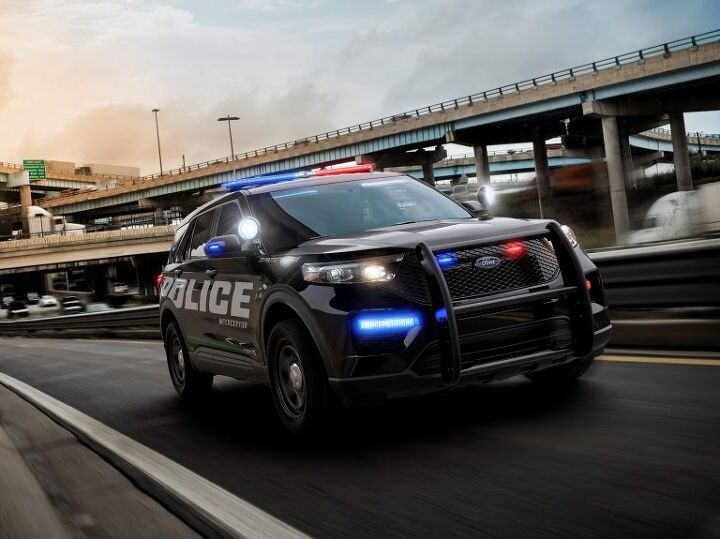

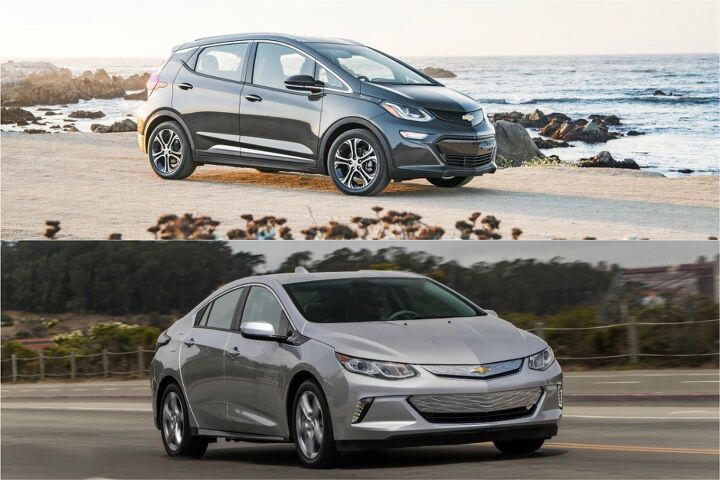
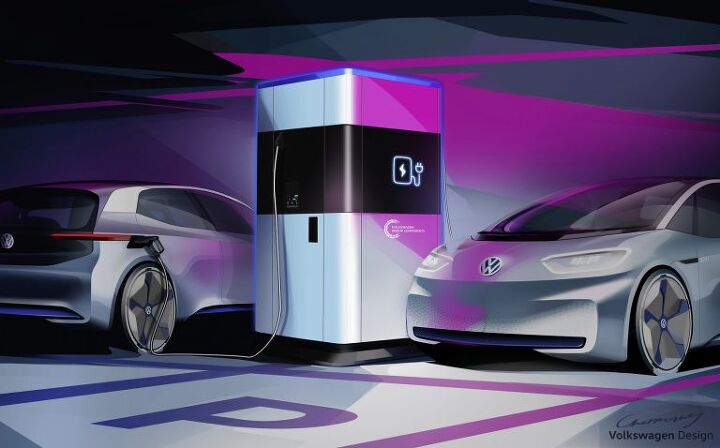

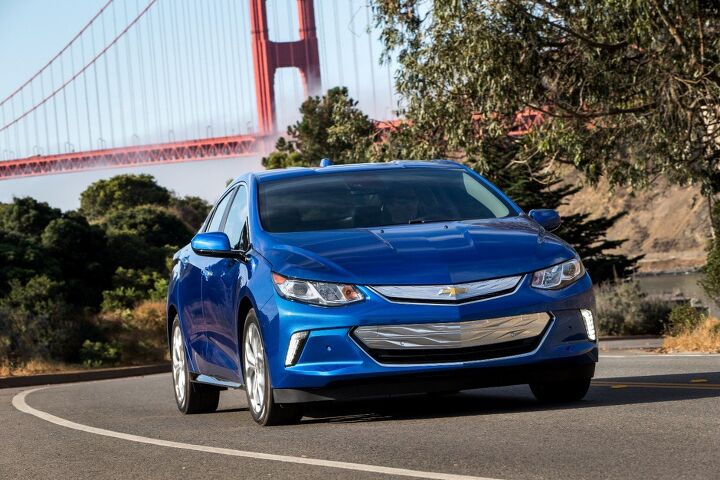



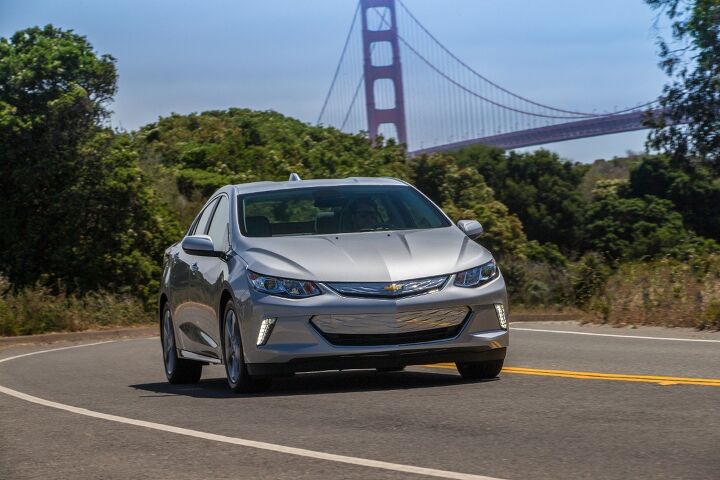













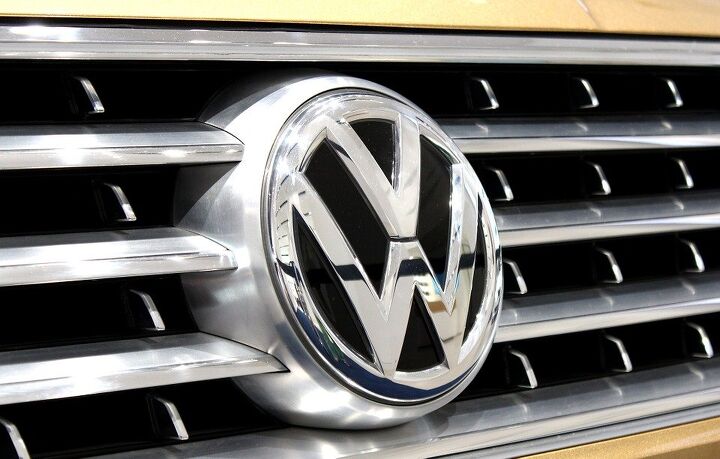

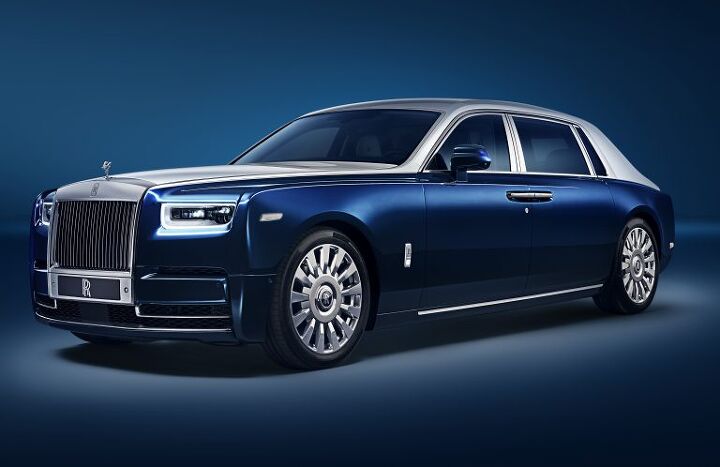








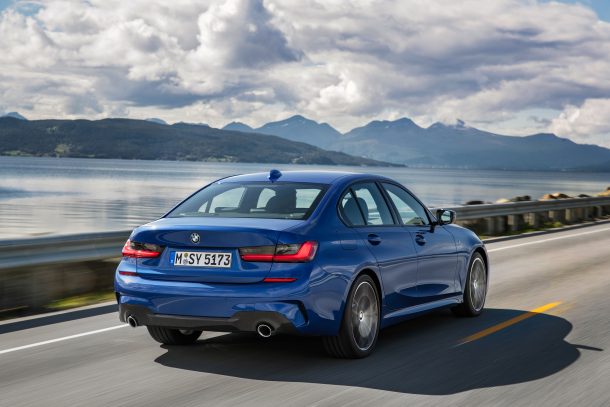




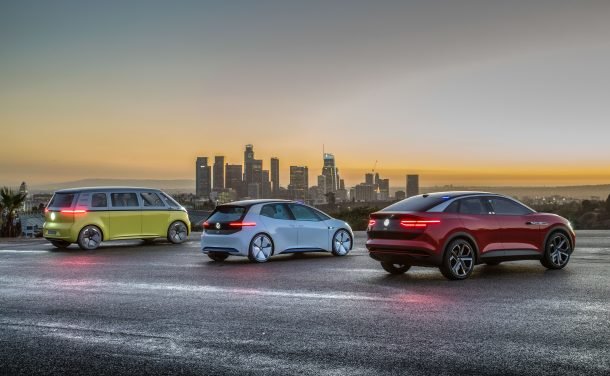



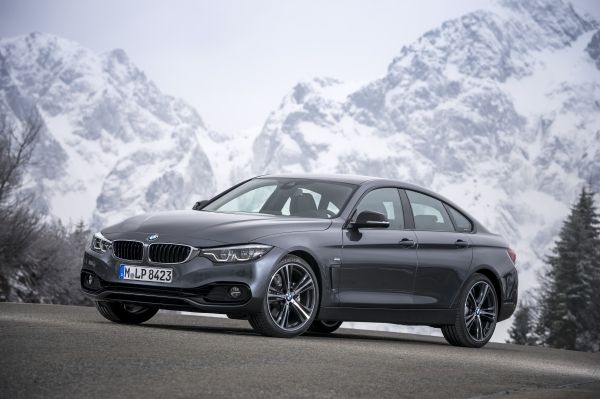







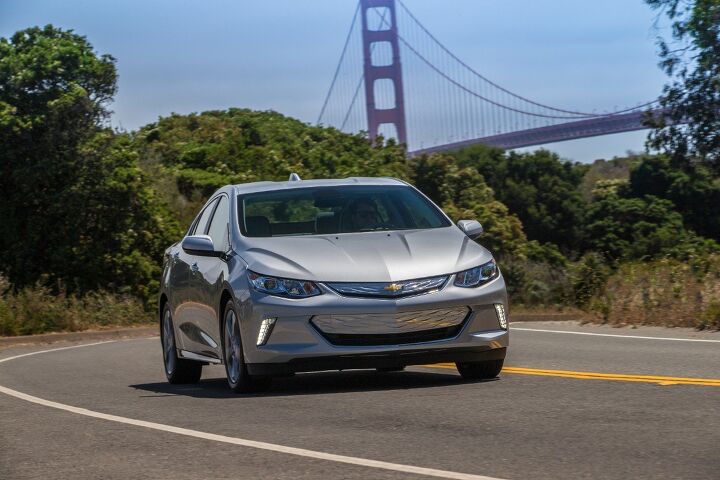
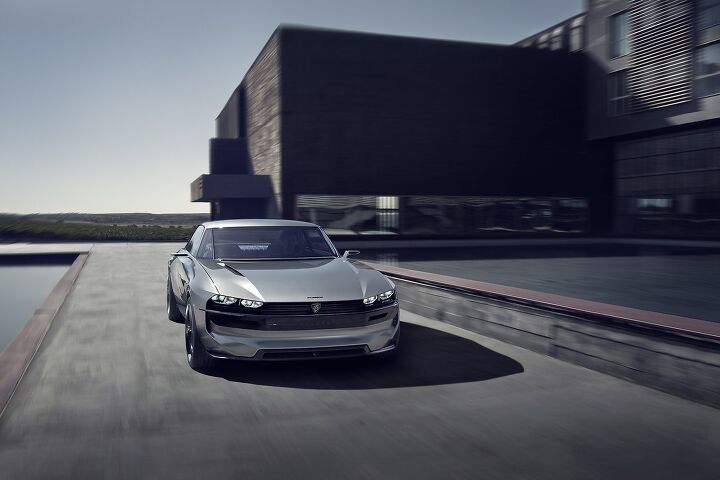




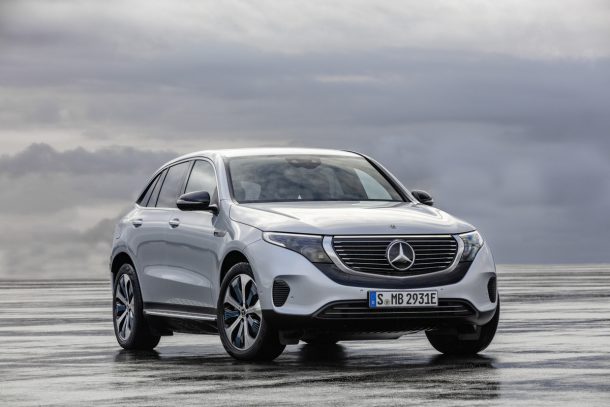













Recent Comments